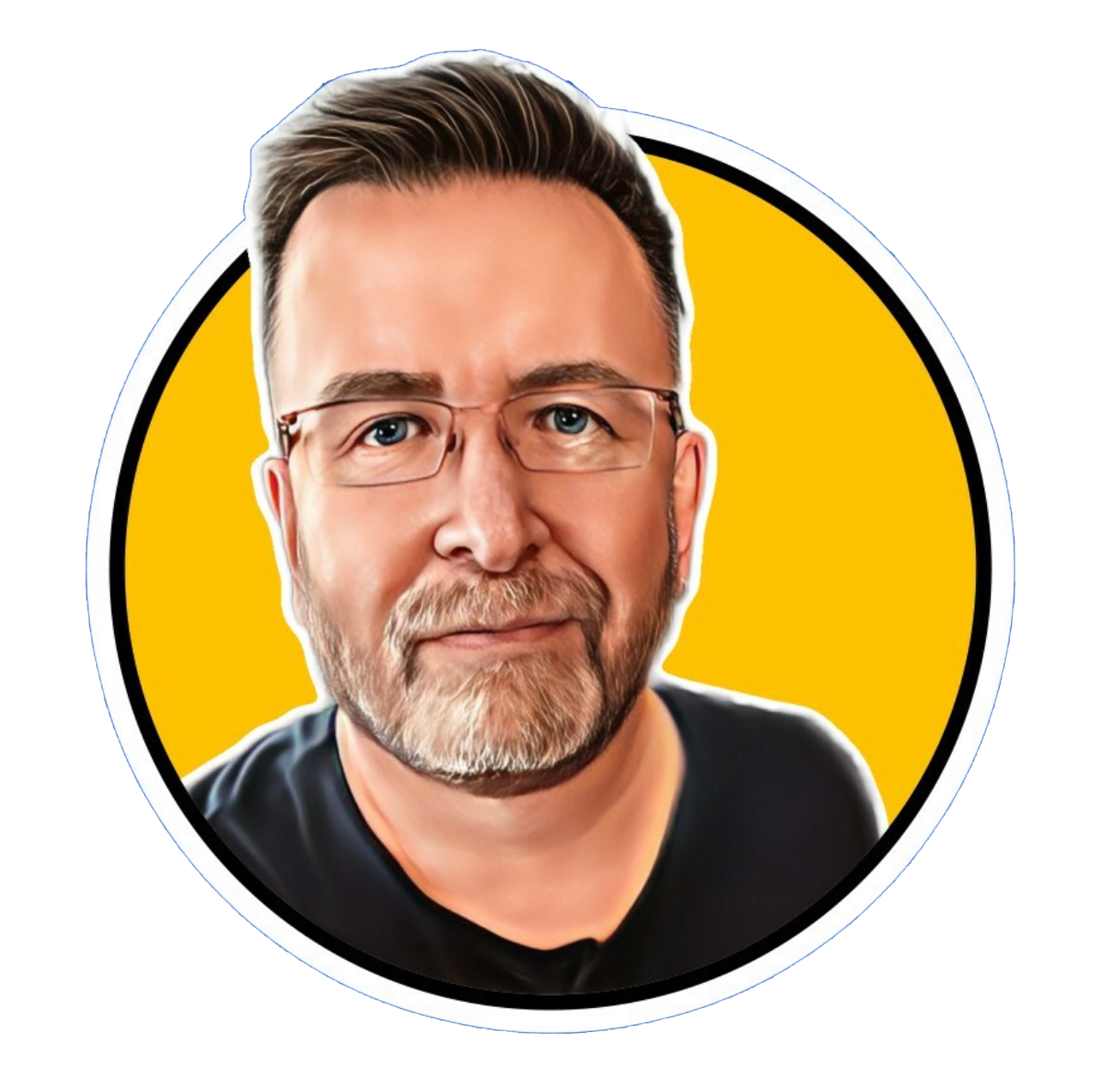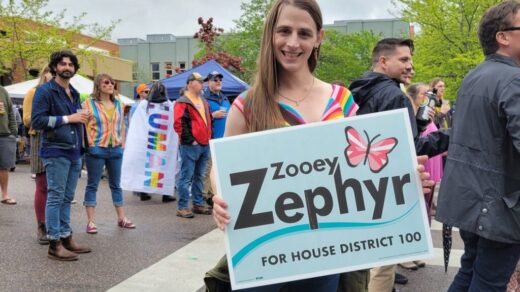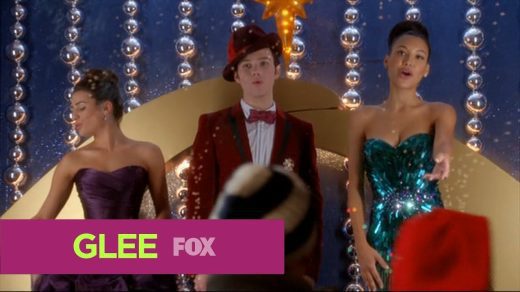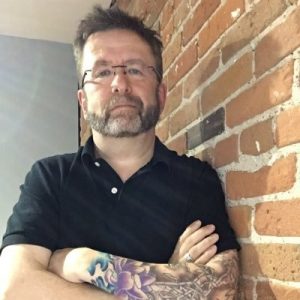Manti Te’o Catfishing Saga is Focus of Netflix Documentary ‘Untold’
Author: Leah Asmelash
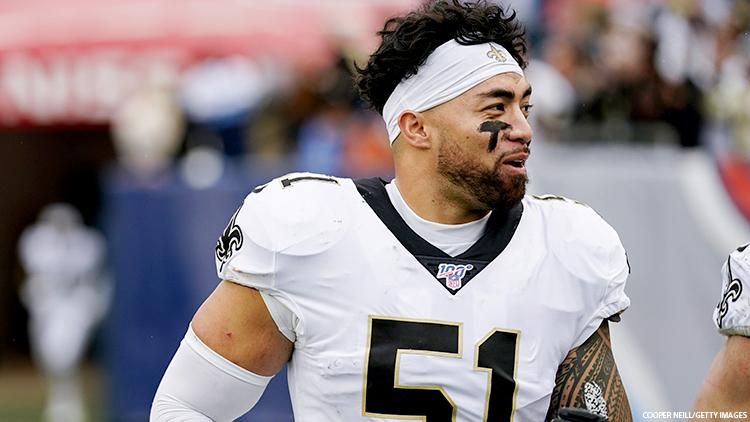
(CNN) — Manti Te’o used to be revered.
In high school, Te’o was an all-around star — beloved by those around him and on track for a full football scholarship at the University of Notre Dame. He was the golden boy in his Hawaii hometown, active in his faith and easy to get along with.
Then tragedy struck. His grandma died, then his girlfriend. Both on the same day.
Only, his girlfriend didn’t actually die. His girlfriend, the media discovered, didn’t even exist.
It was a catfish all along —with Ronaiah “Naya” Tuiasosopo, the woman behind the hoax, caught in the middle.
Te’o, Tuiasosopo, and the elaborate 2013 hoax are the subject of a new two-part documentary, Untold: The Girlfriend Who Didn’t Exist, directed by Ryan Duffy and Tony Vainuku, out Tuesday on Netflix.
The story of Te’o and his fake girlfriend is a well-known one, but the story of Tuiasosopo — who created the fictional girlfriend as a way to come to terms with her own gender dysphoria — is less so. Tuiasosopo has since come out as a transgender woman.
Though audiences may first recognize Te’o’s name, the documentary opens with Tuiasosopo. She takes a central role throughout the two episodes, bringing audiences along on her journey of self discovery and gender identity — shaped in part by her experiences catfishing Te’o.
CNN spoke with Maclain Way, who created the Untold series with brother Chapman, about how the team approached portraying Tuiasosopo’s and Te’o’s journeys as both synchronous and separate.
This conversation has been edited for length and clarity.
What made you decide to focus on Manti Te’o and Naya’s story specifically?
When we got the news that we’d be able to make more Untolds and we’d have a volume 2, this was a story that was on our literal and proverbial whiteboard of sports ideas. It’s just always been a white whale in the sports documentary space; it’s something that my brother and I remember very well, just kind of reading the news media on it and all the noise.
We reached out to Naya and just had a fascinating conversation with her. It was probably a call that was only going to be 15, 20 minutes, and we ended up talking to her for two hours. And she ran us through just a remarkable journey that she’s been on, a journey of self-discovery and self-identity and how she identifies as a trans woman.
And then in terms of reaching out to Manti and talking to him, I definitely think a lot of people had approached him about talking about this story over the years. I think there was a pile of documentary pitches sitting in his inbox over the course of the years.
I think we caught Manti at a really interesting time in his life. His NFL career was winding down — I doubt that this would’ve been a story that he would’ve commented on or done a really long form in-depth interview on while he was still active in the NFL. But he’d just gotten married and just had a kid, and I think for both Naya and Manti, neither were quite happy with how the media at large covered this saga back in 2013. I don’t think they wanted that media coverage to be the period at the end of this really long sentence that was a story between these two individuals. And so I think for both of them the opportunity to really interview at length, at deep, about this story was appealing and attractive to them. And for us as filmmakers, that’s when we really knew “All right, we have something special here. I think we can go make this documentary film.”
One thing that stood out to me is this is a story about Manti obviously, but you choose to lead with Naya, and you just said that you actually spoke to her first. But many people may expect the episodes to be more football-focused. Why did you make that choice to lead with her and put her story at the forefront?
It was where, as filmmakers, we kind of had the most questions. Naya had appeared on the Dr. Phil show and had engaged with light media performances but had never really gone deep on the record and told her whole side of the story.
I always kind of had more questions about who are the people that engage in this catfishing … “How did this happen, how did this come about, how was this relationship like between you two?”
[Naya] was very open, very vulnerable, she told her story warts and all. Just listening to her motivations of why she decided to occupy this space, why create this online identity profile, DM and message a football player like Manti Te’o, build a relationship, have phone calls — it was all just really fascinating for us, and I think that was really the basis of why we were so interested in speaking with her.
I’m a sports fan, but I definitely thought that her part of the story was the one that roped me in.
Yeah, and I think also we don’t quite have a mandate, or we don’t really like to shoehorn these stories into specific thematic overarching bridges between all of our Untold documentaries. But I do think in a way, none of our documentaries, even though they’re sports documentaries, really have anything to do with who’s going to win the championship game, who’s going to hit the three-pointer as the clock winds down and win the game for their team. Really, we talk about these stories as they’re just very interesting things happening off-field or off-ice or off-court. That’s really the story telling that we like to tell in the vein of doing these sports documentaries.
For this one, this kind of mega-big catfishing scandal from 2013, it just seemed ripe. Yes, it is a sports story, a football story to a degree, but really it’s a story about two individuals who were pretty young at the time — I think they were 19, 20 years old when they were building this relationship — and so to us they were really the only two people that knew what those conversations were, that knew what their relationship was like, that knew how each other felt about one another. And so for us, it was just really a strong requirement that we would have both of them speak about this because I think that’s really the only way you can tell this type of story.
Naya’s transition journey is a huge part of this documentary, and I know you included a disclaimer that Manti and some of those interviewed didn’t know Naya is trans when referring to her. You also showed some older photos and footage from before she transitioned. I know sometimes those things can be sensitive for a lot of folks. How did you decide to navigate that in the two episodes, particularly for an audience that may not be as familiar with transgender identity and LGBTQ+ issues?
I think that the nuanced point to make is that these documentaries take a long time just because they’re their own art forms, and a two-part documentary for us took us over two years to make. When we first talked to Naya, the way she spoke about her journey of self-discovery and a journey of self-identity was an evolving process.
She now, and we are so encouraging of this, identifies as a proud trans woman. But at the time that we were filming this documentary, her journey was evolving to a degree. So in discussion with her and our team and people that are deeply rooted into LGTBQ matters, we basically had an understanding that it wasn’t quite our place as filmmakers to tell others about the complex journey that she was going on. I think if the documentary was starting today, considering where Naya’s at, we would probably be in a different point, but at that time … Naya wasn’t quite identifying as that.
Was there anything that surprised you as you all were going about the research and reporting process? Anything that stuck out that you hadn’t been expecting?
We definitely felt like Naya and Manti were our main storytellers, but obviously as you get introduced to other people and other people have their own perspectives or their own experiences with the story, we did find the investigation that Tim Burke and Jack Dickey at Deadspin did into the story very interesting. Obviously they’re the ones that got the anonymous tip and were the first to break the story and hit publish, but the behind the scenes on just how they operate as investigative journalists was just very fascinating to learn about.
I think that these all kind of start and stop where you get your main storytellers and then you start to think about who else could have interesting voices. We always felt like the Deadspin guys could have interesting voices to a degree. Maybe no one knows really about this story if they didn’t choose to pursue that anonymous tip that they had. So they seemed to have a direct impact on the story, a direct impact on certain plot points in the story and how the story unfolded.
There’s this idea in the episodes of, you could call it lineage maybe, where both Manti and Naya are focusing on being an inspiration to the people coming after them, particularly in the second episode. Was that a theme that you all thought about while putting these episodes together?
I think it was just something that felt genuine and important in the way that they talked about it. For both Naya and Manti, we did several multiday interviews, long day interviews, two to three days with each of them. And in the course of that process, it’s a unique way to speak with people and to hear their stories, but I think you definitely pick up on what is very important to them and what they feel on a deep, genuine human level. And I think for both of them they spoke from the heart when they talked about that and that meaning. So for us as artists and filmmakers, when you get those interview answers back from your subjects it really is like a guiding light and a star in some way that encourages you to put them in your documentary film. I think it was just very genuine from them.
The-CNN-Wire
™ & © 2022 Cable News Network, Inc., a Warner Bros. Discovery Company. All rights reserved.
Original Article on The Advocate
Author: Leah Asmelash

